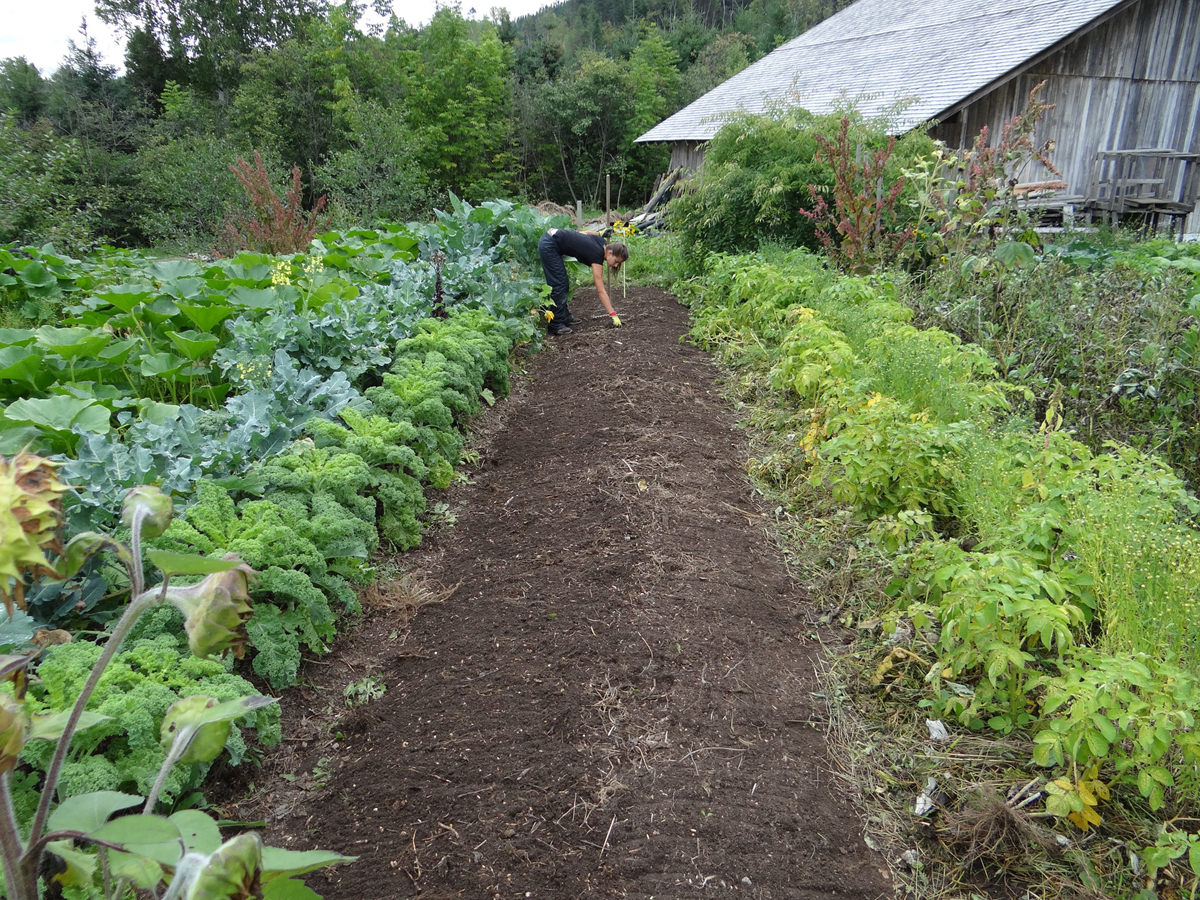Try these seven tested organic gardening ideas to improve bad soil, free, and with negligible labor. How do you improve a garden that’s totally sterile? Maybe it’s builder’s rubble covered with sand. Or maybe conifers have grown there for decades and ruined the ground. Zilch will grow there but weeds.
What’s The Natural Gardening Solution?
Acquire several tons of old manure. Horse manure is best but any litter from a fowl or herbivore will do, in this emergency. Farmers are often glad to give it away. They may even truck it to your door.
Mix it with sand and old leaves, if you can find them. It’s rarely a good idea to dig leaves straight into the soil but they’ll decay fast enough if interlaid with manure. You merely need plenty of harmless, degradable debris that will add texture to the soil.
Till that manure into the ground or, if that’s not easy, spread it thinly on the top and let the worms drag it down.
Get a lot of raw kitchen waste from a restaurant or hotel. It’s best if it’s vegetable peelings rather than plate scrapings, which will contain meat and fish scraps. These will attract rats and crows.
But so long as they’re buried deep, even meat scraps will do little harm. At this point, the object is not to grow food but to build a rough compost heap.
Work that waste into the soil and scatter as many worms on top as you can get. At worst, you can buy them from an angling shop. Red brandling worms are the best and you can usually find them under piles of rotted leaves or lawn clippings.
Sow a green manure, like clover, alfalfa or even bush beans. In poor soil, beans won’t grow well but you don’t need to eat them. They have nitrogenous nodules which will nourish the soil. When the plants are grown, rake them into the soil, leaves and all.
Make an impromptu compost trench. Just dig a furrow and throw in all the degradable trash from your kitchen. Throw soil on the top as you go, to suppress the stench and keep birds off. Once that trench gets full, dig another trench alongside it.
By the time your garden is replete with trenches, the contents of the first trench will have sunk down into a rough compost. Now it’s fit to grow something robust in, like squash, sweet corn or potatoes.
As soon as that rough soil is half-way ready to grow in, sow collards or spinach in it. These will flourish any place. They make an edible green manure. You can cook the leaves or just till them into the soil to help its texture.
Another idea to improve the soil fast is to sow many peas in rows. Any bush variety will serve. They’ll lean against each other as they grow, so you don’t have to support them. Of course, you won’t get a lot of food but their roots will nourish the soil.
This is a good tip early in the year because, once the peas are grown and out, you can sow fast-growing bush beans in their place that should be ready by high summer.
Now you have more green manure to rake in – plus you can eat the beans as well!
Once the beans have been plucked, and the plants dug into the soil, you should have the opportunity to sink in a fall crop of garlic, cabbages, kale and other plants that will keep going over winter.
By next spring, that bad soil should have become good enough so you can think about growing more precious crops.
The main principle is to put as much degradable matter into that soil as possible. You shouldn’t have to buy it. In the country, you can usually find manure. In the town, food waste can be collected from restaurants. Why not bring them an empty bin and pick it up each week, full.
You don’t need to bury this trash deep. Eventually, it will decay and the worms will pull it down.
Don’t stop working in that nutritious waste and you should have a great vegetable garden within two years. Despite the builder’s rubble!
The Author:
Dr John Yeoman PhD is chairman of the information network for natural gardening ideas, the Gardening Guild.
